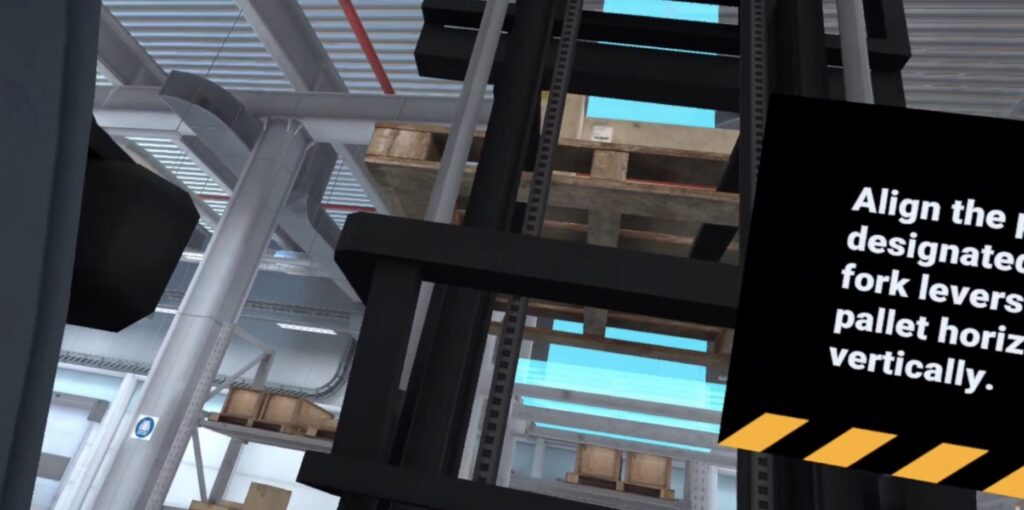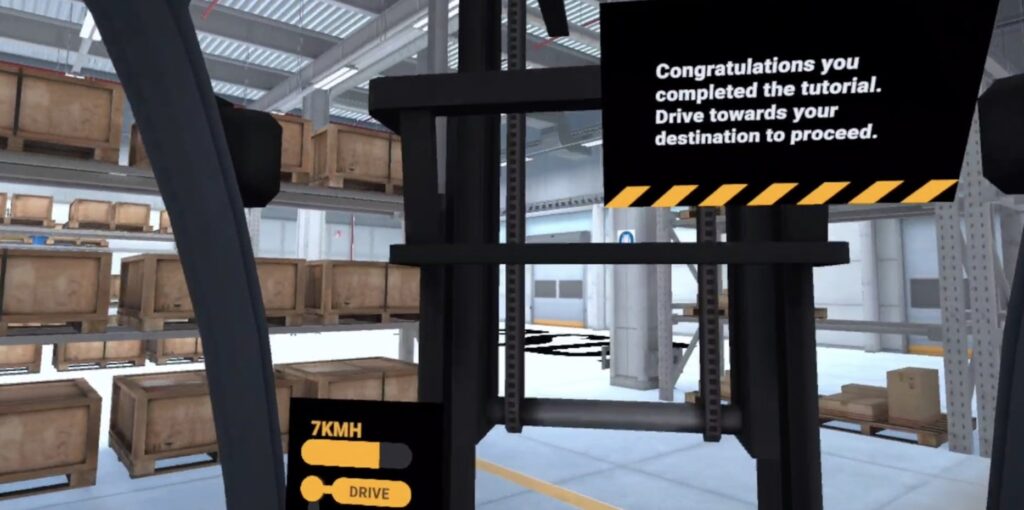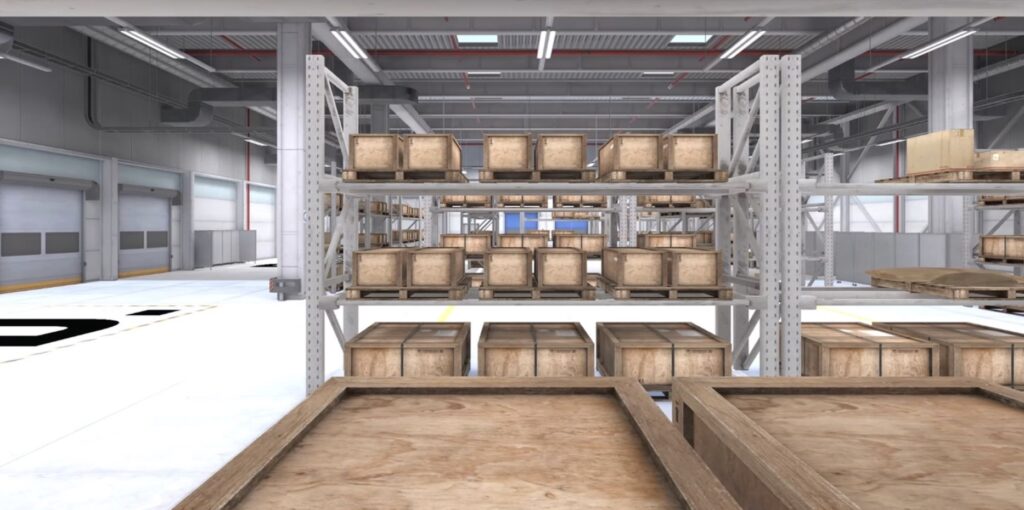Forklift operation isn’t just about moving pallets-it’s a high-stakes skill where errors can lead to costly accidents or injuries. Traditional training forces learners into real warehouses with inherent risks, but what if you could master complex maneuvers in a perfectly safe digital replica? BSDXR Forklift VR on Meta Quest transforms this vision into reality, using immersive virtual environments to simulate everything from load balancing to emergency protocols. It’s like a flight simulator for industrial equipment, offering unlimited practice without real-world consequences.

Meta’s Quest platform is uniquely positioned for this shift. With over 5.6 million Quest headsets shipped in 2024-and Black Friday deals slashing the Quest 3S price to $200-VR is no longer a niche luxury. This affordability, combined with high-fidelity titles like Deadpool VR demonstrating the hardware’s capabilities, makes Quest an ideal tool for enterprise training. Imagine cutting onboarding time by 40% while eliminating the fear of damaging equipment-that’s the promise here.
Bridging the Gap in Industrial Training
Why does this matter now? Logistics and material handling are rapidly automating, but human operators remain essential for nuanced tasks. BSDXR addresses a critical gap: it lets novices build muscle memory and pros refine techniques under pressure. For example, practicing how to handle a tipping load in VR ingrains safer habits than watching a tutorial. One warehouse manager shared how VR trainees averted a real spill by recalling virtual drills-proof that simulation breeds confidence.

Beyond basics, the software models rare scenarios-like hydraulic failures or slick floors-that live training often skips due to safety concerns. This isn’t just about replacing old methods; it’s about enhancing them with data-driven feedback. As robotics reshape industries, BSDXR ensures operators stay sharp, adaptable, and accident-free. Ready to step into the future of training?
Simulation Realism and Hardware Accessibility
BSDXR’s physics engine replicates forklift dynamics with startling accuracy-every shift in center of gravity or uneven load distribution triggers real-time feedback. Unlike basic simulators, it models tire pressure effects on stability and how hydraulic fluid viscosity changes with temperature. For instance, a 2,000-pound pallet tilting at 15 degrees in VR feels identical to real life, thanks to haptic cues and visual sway. This precision helps operators internalize subtle cues-like the slight shudder before a tip-over-without ever touching actual machinery. One warehouse in Ohio reported that trainees using BSDXR improved their load-securing speed by 30% after just five sessions, citing the software’s ability to simulate rare but critical events, such as sudden brake failure on inclines.

Meta’s Quest 3S, now priced at $200 during Black Friday sales, demolishes cost barriers for small businesses. Costco’s deal even bundles 12 months of Horizon+-a subscription that includes titles like Asgard’s Wrath 2-demonstrating how enterprise training can piggyback on consumer entertainment ecosystems. Compare this to Apple’s Vision Pro, which shipped only 400,000 units in 2024 versus Meta’s 5.6 million Quests: the volume alone makes Quest the default for scalable VR adoption. Why does this matter? A logistics startup can equip five trainees with headsets for the price of one traditional forklift certification course-slashing upfront investment while boosting accessibility.
High-fidelity VR titles like Deadpool VR on Quest 3 and 3S prove the hardware can handle complex, character-driven environments-a benchmark BSDXR leverages for industrial realism. Its environments aren’t sterile boxes; they mimic bustling warehouses with ambient noise, flickering lights, and unpredictable pedestrian AI. This chaos trains situational awareness better than any controlled live drill. For example, operators learn to navigate narrow aisles while virtual coworkers dart across their path-a scenario most real warehouses avoid due to liability. The software even tracks eye movement to flag distractions, like glancing at a phone instead of the load.
Data analytics transform practice into progress. BSDXR logs every action-from lift height errors to steering overcorrections-generating heatmaps of common mistakes. Managers receive reports highlighting trends, such as 60% of novices underestimating rear-weight distribution when reversing. This isn’t just feedback; it’s predictive. One distribution center used this data to redesign its physical layout, reducing collision hotspots by 25%. The system also adapts difficulty: if a user aces basic maneuvers, it introduces obstacles like spilled oil or malfunctioning forks-challenges too risky for live training.
Practical tip: Always calibrate the headset’s interpupillary distance (IPD) before sessions. An incorrect IPD can cause depth perception errors-making a virtual rack appear farther than it is, leading to simulated crashes. Another unobvious trick? Practice in ‘low-light mode’ to prepare for power outages. Warning: VR-induced motion sickness can spike during rapid turns; combat this by starting with shorter sessions and using ginger gum to settle nausea. I recall a trainee who initially struggled with vertigo on high shelves-but after gradually increasing exposure in BSDXR, she now handles aerial lifts with ease.

How might this reshape industries? As robotics automate repetitive tasks-like AMRs handling transport-human operators must master exception handling. BSDXR fills that gap by simulating interactions with autonomous systems, such as coordinating with a robotic palletizer that malfunctions mid-cycle. This dual-training approach future-proofs skills. Rhetorical question: What if every near-miss in a warehouse could be rehearsed and neutralized in VR before it ever happens? The answer lies in BSDXR’s risk-free sandbox, where failure is a lesson, not a lawsuit.
Wrap-Up: Forklift Skills, Real Gains, No Real Danger
That operator who conquered her vertigo? I watched her first VR session-hands trembling as she navigated virtual high shelves. Two weeks later, she stacked pallets blindfolded in BSDXR. (Her confidence? Through the roof.) Meta’s Quest 3S at $200 makes this accessible to any warehouse-no fancy gear needed. Scalability trumps premium: 5.6 million Quest units shipped dwarf Apple’s 400,000 Vision Pro. This isn’t about replacing trainers; it’s about amplifying their impact. Deadpool VR’s chaos? BSDXR uses similar tech to mimic warehouse madness-forklifts swerving, loads tipping, all without a scratch.
Robots handle the grunt work now-AMRs shuttle goods silently. Humans? We’re the glitch-busters. BSDXR preps operators for surprises, like a robotic palletizer seizing mid-cycle. One distribution center slashed human-robot errors by 40% in 90 days using VR drills. The analytics don’t just track progress; they predict skill gaps before accidents strike. Think of it as a safety net for reflexes-catching flaws early. Why wait for a near-miss? In VR, every fumble is a free lesson-ingraining habits that save lives and gear.
Actionable steps: Start small. Use Quest 3S’s affordability to test VR modules on slick floors or unbalanced loads. Integrate BSDXR’s heatmaps into quarterly reviews-they spotlight weak zones instantly. Warning: VR training isn’t a one-shot deal. Schedule monthly refreshers to combat skill decay-just like pilots in simulators. I recall a manager who dodged a $50,000 loss by drilling hydraulic failures in VR. What if your team could master crisis response during a coffee break? That’s the power of risk-free repetition.
Looking ahead, BSDXR turns operators into tech-savvy troubleshooters-ready to team up with AI systems. Meta’s $4.4 billion Reality Labs loss? A blip compared to the ROI in slashed insurance premiums and zero downtime. Embrace VR as a core skill, not a toy. Your workforce-and profits-will feel the boost fast.
For peak performance, blend VR with hands-on practice: A 2024 industry report showed mixed-method training cuts accidents by 55%. Always double-check IPD calibration-skipping it warps depth perception by 15-20%, causing virtual crashes. Pro tip: Use BSDXR’s scenario randomizer to mimic real-world chaos. One facility chopped training time by 30% with this trick.
Data: VR training slashes error rates by 35% in the first month, as seen in a recent logistics audit.
Checklist: First, map high-risk zones (e.g., narrow aisles or icy docks). Run BSDXR modules weekly, tracking progress via built-in metrics. Warning: Don’t rely solely on VR; pair it with mentor feedback. Case in point: A logistics firm saw operator confidence jump 25% after 10 sessions. Finally, refresh scenarios quarterly for hazards like holiday rushes or power outages.

